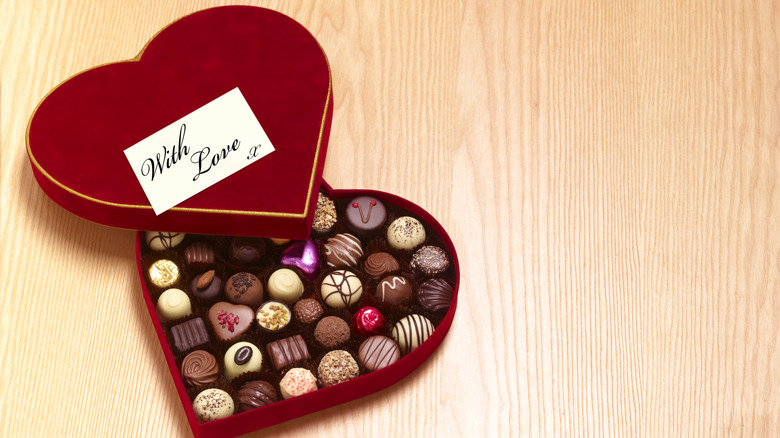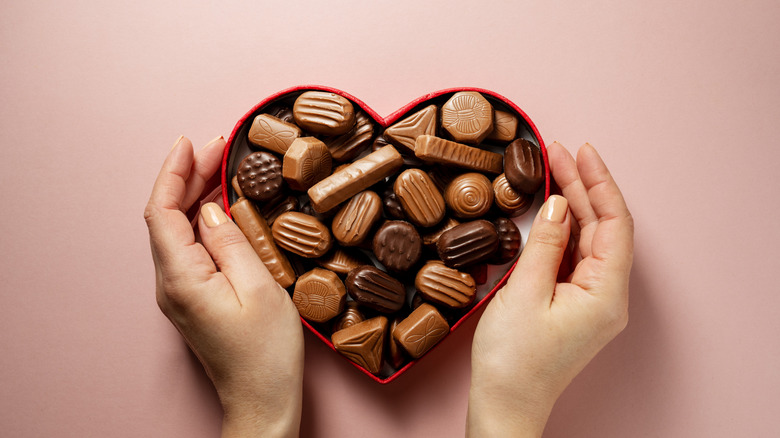How Many Heart-Shaped Boxes Of Chocolate Are Sold For Valentine's Day?
It's that time of year again — garlands of lacy paper hearts are festooned everywhere you go, pink-cheeked, naughty Kewpie-doll archers are taking aim on the fronts of Hallmark cards, and bunches of scarlet roses are popping up like malware in the aisles of the grocery store. These signs can only mean one thing: Valentine's Day is nigh. Perhaps no symbol of this holiday of passion is quite as ubiquitous as the heart-shaped box of chocolate. Chocolate has been rife with the symbolism of love for centuries, but it wasn't until 1861 that British chocolatier Richard Cadbury had the bright idea to present his company's bonbons in a heart-shaped box that would speak to the ardor of the giver.
You have many choices when it comes to "sweets for the sweet" on V-Day. Chocolate-covered strawberries (which have to be stored mindfully) are a yummy option, as are Hershey Kisses — for obvious reasons. You don't even have to trifle with chocolate at all: those chalky, sappy conversation hearts started outselling all other Valentine's candy around 2018.
Still, heart-shaped boxes of chocolate persist, with about 36 million units being sold each year. Why the fascination? Let's take a deep dive.
Why chocolate? Why hearts?
The association of chocolate with aphrodisiac qualities dates back to the discovery of the New World, when Spanish conquistadors wrote letters home about Aztec emperor Montezuma downing a cup before he spent the night with one of his many wives. In colonial Latin America, imbibing chocolate mixed with honey and spices was so popular with pent-up housewives to the point that it became irrevocably associated with feminine wiles. Candymaking advances allowing the creation of solid chocolate treats came later, coinciding neatly with the origin of modern-day Valentine's Day celebrations in the mid-1800s. We've been trying to remove chocolate stains from our clothing ever since.
As for the heart shape we associate with love today, that has a bit more convoluted history. Some scholars think that the heart shape came about due to the outline of an ivy leaf, since ivy has historically stood for fidelity. Still others point to the now-extinct silphium plant, which was associated with hanky-panky due to its reportedly being an effective form of ancient contraception. Either way, Victorians were wild about heart motifs and romanticism, and Queen Victoria had heart-shaped jewelry that she particularly loved. It's a matter of cosmic kismet that chocolate and the shape of a heart were both never so popular as during the middle of the 19th century, giving rise to the boxes of chocolate that we still give our sweethearts to this day ... all 36 million of them, not accounting for the ones we eat ourselves!

